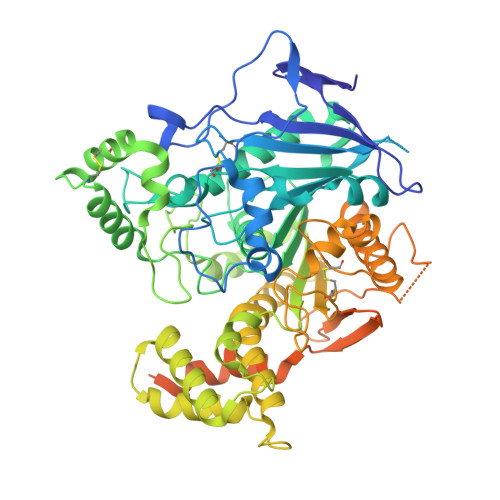Canonical versus non-canonical transsynaptic signaling of neuroligin 3 tunes development of sociality in mice.
Yoshida, T., Yamagata, A., Imai, A., Kim, J., Izumi, H., Nakashima, S., Shiroshima, T., Maeda, A., Iwasawa-Okamoto, S., Azechi, K., Osaka, F., Saitoh, T., Maenaka, K., Shimada, T., Fukata, Y., Fukata, M., Matsumoto, J., Nishijo, H., Takao, K., Tanaka, S., Okabe, S., Tabuchi, K., Uemura, T., Mishina, M., Mori, H., Fukai, S.(2021) Nat Commun 12: 1848-1848
- PubMed: 33758193
- DOI: https://doi.org/10.1038/s41467-021-22059-6
- Primary Citation of Related Structures:
7CEE, 7CEG - PubMed Abstract:
Neuroligin 3 (NLGN3) and neurexins (NRXNs) constitute a canonical transsynaptic cell-adhesion pair, which has been implicated in autism. In autism spectrum disorder (ASD) development of sociality can be impaired. However, the molecular mechanism underlying NLGN3-mediated social development is unclear. Here, we identify non-canonical interactions between NLGN3 and protein tyrosine phosphatase δ (PTPδ) splice variants, competing with NRXN binding. NLGN3-PTPδ complex structure revealed a splicing-dependent interaction mode and competition mechanism between PTPδ and NRXNs. Mice carrying a NLGN3 mutation that selectively impairs NLGN3-NRXN interaction show increased sociability, whereas mice where the NLGN3-PTPδ interaction is impaired exhibit impaired social behavior and enhanced motor learning, with imbalance in excitatory/inhibitory synaptic protein expressions, as reported in the Nlgn3 R451C autism model. At neuronal level, the autism-related Nlgn3 R451C mutation causes selective impairment in the non-canonical pathway. Our findings suggest that canonical and non-canonical NLGN3 pathways compete and regulate the development of sociality.
Organizational Affiliation:
Department of Molecular Neuroscience, Faculty of Medicine, University of Toyama, Toyama, Japan. toyoshid@med.u-toyama.ac.jp.















